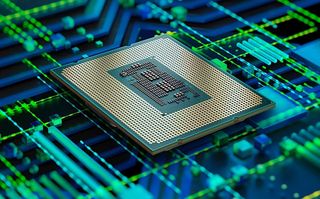Europe sets sights on global semiconductor domination
The new EU Chips Act plans to invest in the future of semiconductors for the continent.

With the global chip shortage still hitting hard, countries around the world are upping the ante when it comes to chip production. New fabrication sites are setting up all over the world from companies like Intel, which has recently started setting up its new Irish production factory, and seems to be looking at Malaysia next. Governments like the United States of America are also investing billions into easing the current shortage with new Acts. Now we are seeing Europe with an official Act of its own to help with the global semiconductor demand.
The European Union has announced and detailed some of the EU Chips Act, describing it as “Europe's plan to regain global leadership in semiconductors”. Up until sometime in the '80s Europe had a fairly strong semiconductor industry, with companies like Siemens and Phillips but has since fallen behind. With technology ever moving forward, and in light of the current shortage, it makes sense that Europe is joining many other governments and corporations in the race for semiconductor dominance.

Best CPU for gaming: the top chips from Intel and AMD
Best graphics card: your perfect pixel-pusher awaits
Best SSD for gaming: get into the game ahead of the rest
The European Chips Act will see €11 billion invested into efforts to “finance strategic infrastructure” for chip creation. The intention is to allow for newer chips to reach industrialization by having processes in place to accelerate all stages of manufacturing from design to production. These are said to be accessible to companies big and small, European and international. This could be a big help to smaller companies looking to get started, and may mean we see some interesting innovations coming out of the EU when it comes to semiconductors.
The statement talks more about positioning Europe as a place that will be desirable to produce chips for businesses all over the world. To this end the act also includes the potential to invest €30 billion in building fabrication centres by 2030. This puts the total spend at around $70 billion USD over the next ten years.
2030 is likely to look very different when it comes to silicon than today. The chip shortage should be well and truly over, for one, but chips could be entirely different. We could even have hybrid particle magnetic semiconductors by then. If this all goes ahead as planned, Europe is looking like a very attractive option for making semiconductors in the next decade. Hopefully we don't see anymore pesky factory fires getting in the way.
The biggest gaming news, reviews and hardware deals
Keep up to date with the most important stories and the best deals, as picked by the PC Gamer team.

Hope’s been writing about games for about a decade, starting out way back when on the Australian Nintendo fan site Vooks.net. Since then, she’s talked far too much about games and tech for publications such as Techlife, Byteside, IGN, and GameSpot. Of course there’s also here at PC Gamer, where she gets to indulge her inner hardware nerd with news and reviews. You can usually find Hope fawning over some art, tech, or likely a wonderful combination of them both and where relevant she’ll share them with you here. When she’s not writing about the amazing creations of others, she’s working on what she hopes will one day be her own. You can find her fictional chill out ambient far future sci-fi radio show/album/listening experience podcast right here. No, she’s not kidding.
Most Popular







